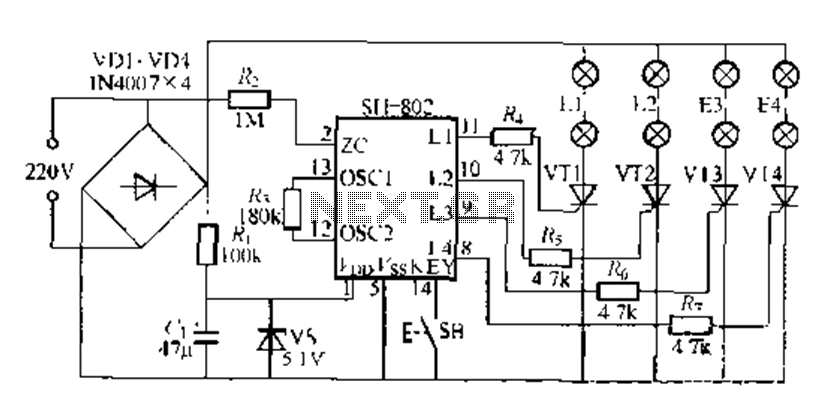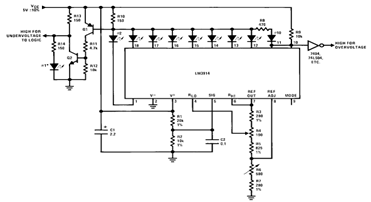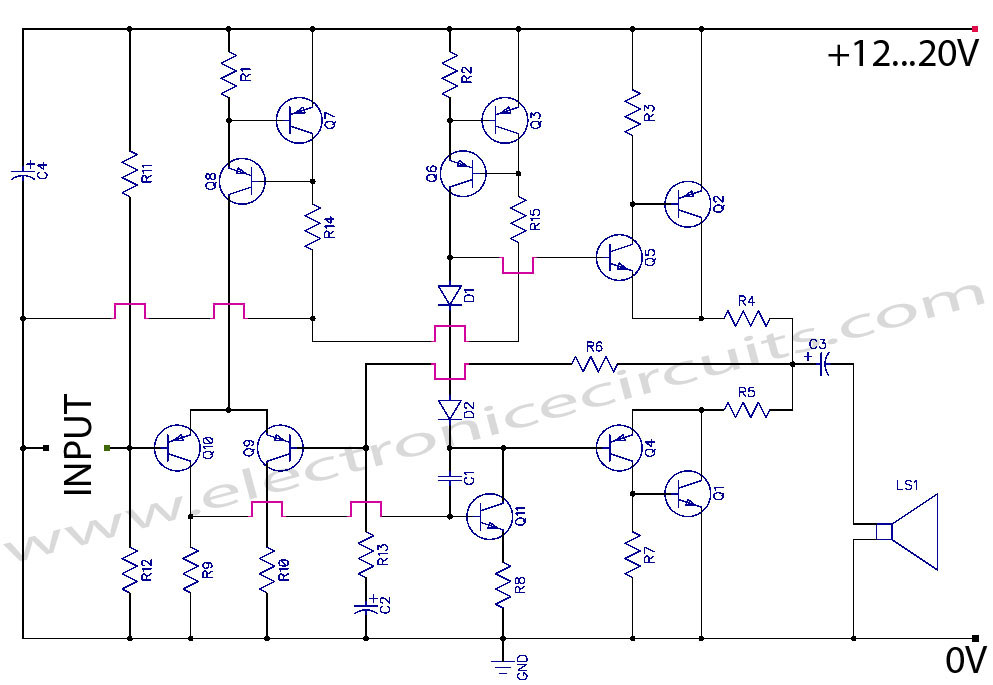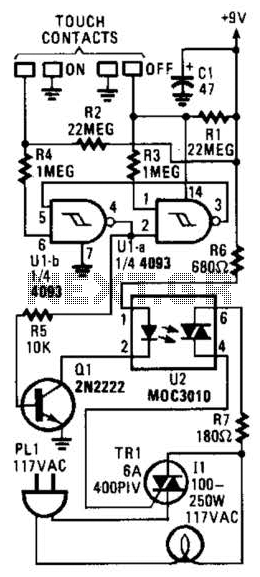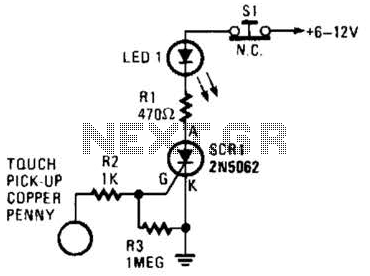
An Expandable Transistor Based Burglar Alarm circuit
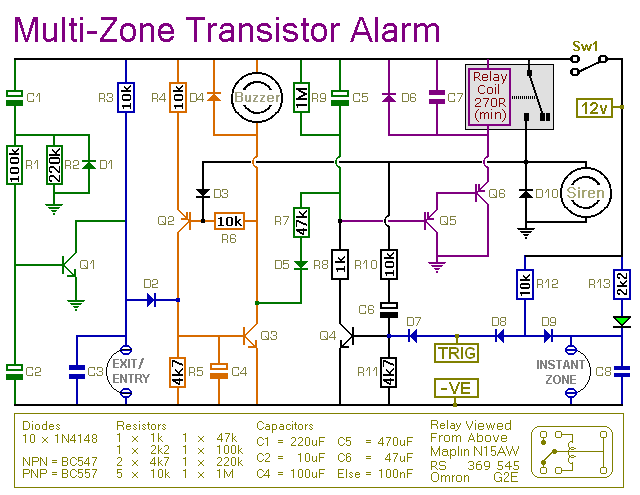
This transistor-based alarm features automatic exit and entry delays, along with a timed bell cut-off and system reset. In addition to the exit/entry zone, the basic alarm board includes one instant zone, which is sufficient for many applications. However, the modular design allows for easy expansion, enabling the addition of multiple zones to the system. Details of a four-zone expansion module are provided.
The described alarm system utilizes a transistor-based circuit to manage various functions essential for security and user convenience. The automatic exit and entry delays serve to provide users with sufficient time to leave or enter the protected area without triggering the alarm unintentionally. This feature is critical in residential and commercial applications where users may need to disarm the system upon entry.
The system incorporates a timed bell cut-off function that prevents the alarm from sounding indefinitely. This feature enhances user comfort by ensuring that alarms are not excessively disruptive, thus allowing for a reasonable period for the user to respond to the alarm condition. The system reset function provides a straightforward method for users to reset the alarm after it has been triggered, ensuring that the system can quickly return to its standby state.
The basic alarm board includes one instant zone, which is designed to trigger the alarm immediately upon detection of an unauthorized entry. This zone is particularly useful for high-security areas where immediate alerting is necessary. The modular design of the system is a significant advantage, as it allows for scalability. Users can expand the system by integrating additional zones as required, enhancing the overall security coverage.
The mention of a four-zone expansion module suggests that the system can be customized to meet specific security needs. Each zone can be configured to respond differently based on the security requirements of the area it monitors. For instance, additional zones could be programmed for different types of sensors, such as motion detectors or door/window contacts, allowing for a comprehensive security solution tailored to the user's environment.
Overall, this transistor-based alarm system presents a flexible and efficient solution for security applications, offering essential features that can be adapted to various scenarios through its modular design.This transistor based alarm features automatic Exit and Entry delays - together with a timed Bell Cut-off and system Reset. Along with the Exit/Entry zone - the basic alarm board has one Instant Zone. This will be adequate in many situations. However - the modular design means that it`s easy to add as many zones as you like to the system. Details of a Four-Zone expansion module are provided.. 🔗 External reference
The described alarm system utilizes a transistor-based circuit to manage various functions essential for security and user convenience. The automatic exit and entry delays serve to provide users with sufficient time to leave or enter the protected area without triggering the alarm unintentionally. This feature is critical in residential and commercial applications where users may need to disarm the system upon entry.
The system incorporates a timed bell cut-off function that prevents the alarm from sounding indefinitely. This feature enhances user comfort by ensuring that alarms are not excessively disruptive, thus allowing for a reasonable period for the user to respond to the alarm condition. The system reset function provides a straightforward method for users to reset the alarm after it has been triggered, ensuring that the system can quickly return to its standby state.
The basic alarm board includes one instant zone, which is designed to trigger the alarm immediately upon detection of an unauthorized entry. This zone is particularly useful for high-security areas where immediate alerting is necessary. The modular design of the system is a significant advantage, as it allows for scalability. Users can expand the system by integrating additional zones as required, enhancing the overall security coverage.
The mention of a four-zone expansion module suggests that the system can be customized to meet specific security needs. Each zone can be configured to respond differently based on the security requirements of the area it monitors. For instance, additional zones could be programmed for different types of sensors, such as motion detectors or door/window contacts, allowing for a comprehensive security solution tailored to the user's environment.
Overall, this transistor-based alarm system presents a flexible and efficient solution for security applications, offering essential features that can be adapted to various scenarios through its modular design.This transistor based alarm features automatic Exit and Entry delays - together with a timed Bell Cut-off and system Reset. Along with the Exit/Entry zone - the basic alarm board has one Instant Zone. This will be adequate in many situations. However - the modular design means that it`s easy to add as many zones as you like to the system. Details of a Four-Zone expansion module are provided.. 🔗 External reference
